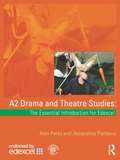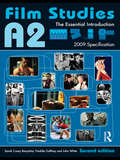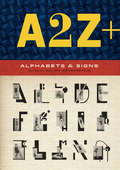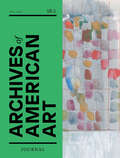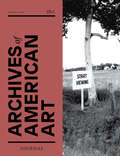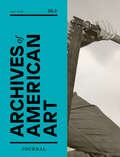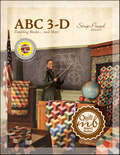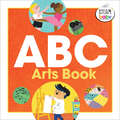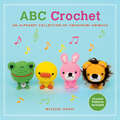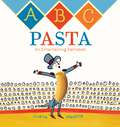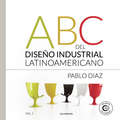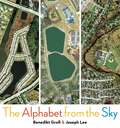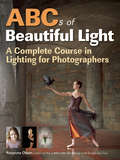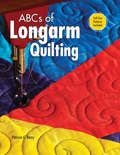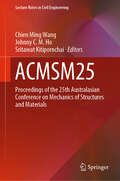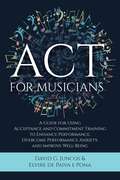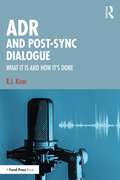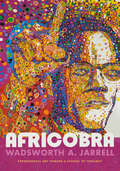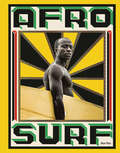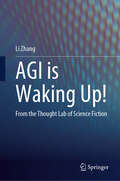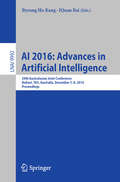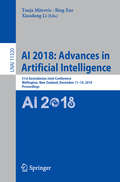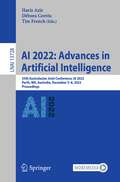- Table View
- List View
A2 Drama and Theatre Studies: The Essential Introduction for Edexcel
by Alan Perks Jacqueline PorteousA2 Drama and Theatre Studies: The Essential Introduction for Edexcel builds on the skills developed during the AS year to provide clear and informative guidance to Units 3 and 4 of the specification. The textbook provides further information on rehearsing, performing, directing and textual analysis, together with new material on deconstructing a script, devising theatre and preparing for the final examination. Features of the text include: overviews of specification and assessment requirements written and practical exercises a glossary of useful words and terms in-depth analysis of the three key plays – Dr Faustus, Lysistrata and Woyzeck extension exercises to stretch the more able student worked examples to illustrate best practice sources for further study advice on study after A Level. Written by a chief examiner and a principal moderator, this book and its companion volume for AS Level offer informed and supportive exercises to ensure that students reach their maximum potential in achieving A Level success.
A2 Film Studies: The Essential Introduction (Essentials)
by John White Freddie Gaffney Sarah Casey BenyahiaA2 Film Studies: The Essential Introduction gives students the confidence to tackle every part of the WJEC A2 Level Film Studies course. The authors, who have wide ranging experience as teachers, examiners and authors, introduce students step by step, to the skills involved in the study of film. The second edition has been re-designed and re-written to follow the new WJEC A2 syllabus for 2009 teaching onwards and is supported by a companion website at www.alevelfilmstudies.co.uk offering further advice and activities. There is a chapter for each exam topic including: The small scale research project The creative project Aspects of a national cinema - Bollywood; Iranian; Japanese; and Mexican International Film Styles - German and/or Soviet; Surrealism; Neo-Realism; and New Waves Specialist studies - Urban Stories; and Empowering Women Spectatorship topics - Early cinema before 1917; Documentary; Experimental and expanded film/video; and Popular film and emotional responses The single film critical study - every film covered Specifically designed to be user friendly, the second edition of A2 Film Studies: The Essential Introduction has a new text design to make the book easy to follow, includes more than sixty colour images and is packed with features such as: case studies relevant to the 2009 specification activities on films like All About My Mother, 10, Vertigo and City of God key terms example exam questions suggestions for further reading and website resources. Matched to the current WJEC specification, A2 Film Studies: The Essential Introduction covers everything students need to study as part of the course.
A2Z+: Alphabets & Signs
by Mel Gooding Julian RothensteinNow in its fourth iteration, revised and dramatically expanded with over 100 new pages, Julian Rothenstein's classic compendium, A2Z+ remains the ultimate source for unusual, inventive fonts not found anywhere else: the "Tippler" alphabet created from an elegant, drunk man's meanderings, one based on ink spots, and another derived from an avant-garde Czech ballet. Eye test charts assert their modernist merit, and a Russian graphic simplifies the connection between agriculture and industry in elegant Constructivist type.Culled from books, advertisements, packaging, posters, and technical manuals from around the world, this off-beat collection is the perfect inspiration for designers, history buffs and anyone else interested in remarkable typefaces, symbols, and patterns.
AAA vol 58 num 2
by The University of Chicago PressThis is volume 58 issue 2 of Archives of American Art Journal. First published in 1960 as the Archives of American Art Bulletin, the Archives of American Art Journal is the longest-running scholarly periodical devoted to the history of art in the United States. This peer-reviewed publication showcases new approaches to and out-of-the-box thinking about primary sources. All contributions must be appropriate for the journal's broad audience and engage in a substantial, meaningful way with the holdings of the Archives of American Art.
AAA vol 59 num 1
by The University of Chicago PressThis is volume 59 issue 1 of Archives of American Art Journal. First published in 1960 as the Archives of American Art Bulletin, the Archives of American Art Journal is the longest-running scholarly periodical devoted to the history of art in the United States. This peer-reviewed publication showcases new approaches to and out-of-the-box thinking about primary sources. All contributions must be appropriate for the journal's broad audience and engage in a substantial, meaningful way with the holdings of the Archives of American Art.
AAA vol 59 num 2
by The University of Chicago PressThis is volume 59 issue 2 of Archives of American Art Journal. First published in 1960 as the Archives of American Art Bulletin, the Archives of American Art Journal is the longest-running scholarly periodical devoted to the history of art in the United States. This peer-reviewed publication showcases new approaches to and out-of-the-box thinking about primary sources. All contributions must be appropriate for the journal's broad audience and engage in a substantial, meaningful way with the holdings of the Archives of American Art.
ABC 3-D Tumbling Blocks . . . and More!: Strip-Pieced Really!
by Marci BakerEveryone can succeed in 3-D! All patterns are strip-pieced... REALLY! No set-in (Y) seams. • Learn the secrets to easily select fabric values to achieve dazzling 3-D designs • Illustrated to guide you through each step of the project • Be inspired by full color photos, alternate color-ways, and various layouts Includes 16 projects, twelve using Marci Baker's strip-pieced method from Not Your Grandmother's Tumbling Blocks and several updated designs from Sara Nephew's most popular book, Big Book of Building Block Quilts, including Hollow Cube, Honeycomb Waffle, Downtown, and Space Crystal. Be inspired to explore the world of 3-D with the full-color photos and step-by-step illustrations.
ABC Arts Book (STEAM Baby for Infants and Toddlers)
by Hope KnightFuel your child's learning through the power of S.T.E.A.M. with this ABC art book for kids ages 0 to 3 Give your little artist a jump start with this fun, inspiring way to learn their ABCs. From Actor to Zoom Lens, this ABC book introduces young children to the arts with each letter of the alphabet, doubling the learning and fun while giving your toddler a head start on their education. Levels of discovery—Explore a tiered learning approach that grows with your child. Focus first on letters, then on words, and then on understanding concepts. Colorful images—Rich and vibrant illustrations add to learning and keep your child engaged. Full S.T.E.A.M. ahead—Encourage a lifelong love of learning with all the books in the S.T.E.A.M. Baby series.
ABC Crochet: An Alphabet Collection of Amigurumi Animals
by Mitsuki HoshiPerfect for crafters at all levels, this delightful, authentically Japanese color volume features irresistibly cute amigurumi characters for each letter of the English alphabet (a-z, with z for "zoo") and instructions for how to crochet ten of the animals featured.Amigurumi is the Japanese art of crocheting stuffed animals—a technique that creates super-cute creatures with large heads and tiny bodies—and with this unique volume, readers take part in an enchanting visual tour of the English alphabet that features adorable amigurumi characters.Along the way, they’ll learn the meaning of Japanese characters and at the end, step-by-step instructions will teach them how to create ten adorable friends. Among the animals featured are a seal, rabbit, koala bear, lion, duck, otter, and hamster.
ABC Pasta: An Entertaining Alphabet
by Juana MedinaA is for angel hair acrobat M is for Macaroni the Magician and T is for tortellini trapeze artist.It's an ABC circus that's good enough to eat!
ABC del Diseño Industrial Latinoamericano
by Pablo DíazABC del Diseño Industrial Latinoamericano - Vol. 1. Empresas, diseñadores, oficinas de diseño y productos únicos de 14 países de Latinoamérica. Análisis, biografías, datos inéditos y curiosidades, en una completa recopilación de calidad. ABC del Diseño Industrial Latinoamericano incluye desde el diseño de electrodomésticos, vehículos y mobiliario, hasta equipamiento, maquinaria, envases y electrónica. 100 casos emblemáticos y más de 500 fotografías.
ABC: The Alphabet from the Sky
by Benedikt Gross Joey LeeDiscover the alphabet from a bird's-eye view!Geographer and designer duo Benedikt Gross and Joey Lee have taken the alphabet to new heights—literally! Using satellite imagery and computer technology, the pair has discovered "accidental letters" all over the world: in roads, rivers, buildings, lakes, and more. Take a journey around the Earth in 26 letters with this special book.&“A delightful anytime book with hours of entertainment&”—Booklist
ABCs of Beautiful Light
by Rosanne Olson"Light is a language, it takes practice to become fluent". This is the premise of the ABCs of Beautiful Light. In this book, Rosanne Olson presents lessons and insight from her many years both in the photographic industry and as a teacher. These are time-tested techniques that leave her clients and students pleased time and time again. Presented in a format that allows the reader to progress at their own pace, this book is sure to leave a lasting impact on any photographer who dives in. The book begins with the fundamentals of photography. Olson leads the reader through the basic functions of the camera, from metering & exposure, to the uses of the digital files and how to manage them. Laying out this groundwork puts the reader in the right position to proceed with the lessons in the book. From there, the importance and concepts of design are explained. While the book focuses on lighting, the understanding of design is essential to creating compelling, memorable photos.
ABCs of Beautiful Light
by Rosanne OlsonEverything we see is lit by one source or another. The questions are: what and how? That is what this book is designed to teach you. Through Roseanne Olson's tried-and-true course on lighting principles for photography, video, and art in general, you will discover how the angles and heights of your light sources affect your pictures. You will learn how to work with light modifiers to change the quality of your light, and how to control light to create a feeling of depth and dimension--whether you're shooting with natural light, continuous artificial light, studio strobes, dedicated flash, or a combination of sources. Assignments are included to help you put each concept into practice as you perfect your skills and train your eyes to see the subtleties of light. You will never look at a photograph or painting in the same way after you read this book!
ABCs of Longarm Quilting
by Patricia C. BarryWhether you favor precise plans and extensive details, or thorough concepts demonstrated via illustrations, everyone can learn from this diverse tutorial. This comprehensive long-arm quilting guide: Explains capabilities and generalities of long-arm machines Demonstrates basic techniques using pantographs and free-hand quilting Includes four projects and two patterns
ACMSM25: Proceedings of the 25th Australasian Conference on Mechanics of Structures and Materials (Lecture Notes in Civil Engineering #37)
by Chien Ming Wang Johnny C. M. Ho Sritawat KitipornchaiThis book presents articles from The Australasian Conference on the Mechanics of Structures and Materials (ACMSM25 held in Brisbane, December 2018), celebrating the 50th anniversary of the conference. First held in Sydney in 1967, it is one of the longest running conferences of its kind, taking place every 2–3 years in Australia or New Zealand. Bringing together international experts and leaders to disseminate recent research findings in the fields of structural mechanics, civil engineering and materials, it offers a forum for participants from around the world to review, discuss and present the latest developments in the broad discipline of mechanics and materials in civil engineering.
ACT for Musicians: A Guide for Using Acceptance and Commitment Training to Enhance Performance, Overcome Performance Anxiety, and Improve Well-Being
by David G. JuncosWhile it is widely recognized that music contributes to the health and well-being of societies, the reverse is not necessarily true. Being a professional musician is a rewarding yet challenging occupation, and the results of newer survey studies show musi
ADR and Post-Sync Dialogue: What It Is and How It's Done
by R.J. KizerWritten by industry expert, R.J. Kizer, this is the first book to provide a comprehensive overview of post-sync dialogue replacement, popularly known as ADR. It explores how this seldom recognised, but essential, technology is used in motion pictures and in fictional narrative television programs, with many examples from past and recent movies to explain approaches and techniques. It is intended primarily as an intuitive book, allowing readers to develop their own interpretation of ADR application, with both historical and procedural background provided throughout. It identifies the many different procedures and mechanical systems invented and used to accomplish the task of ADR, some from as long ago as the early 1920s. The text also details the many different steps, tasks, and routines that must be followed to identify (spot), program, record, edit, and mix the ADR lines into the final sound track of a show. Intended for the sound professional, it is also suitable for students and entry-level editors wishing to master audio dialogue replacement. Film historians and theorists will also find it both informative and enlightening by illustrating the many avenues used to affect and manipulate the recorded spoken word in motion pictures.
AFRICOBRA: Experimental Art toward a School of Thought (Art History Publication Initiative)
by Wadsworth A. JarrellFormed on the South Side of Chicago in 1968 at the height of the civil rights, Black power, and Black arts movements, the AFRICOBRA collective created a new artistic visual language rooted in the culture of Chicago's Black neighborhoods. The collective's aesthetics, especially the use of vibrant color, capture the rhythmic dynamism of Black culture and social life. In AFRICOBRA, painter, photographer, and collective cofounder Wadsworth A. Jarrell tells the definitive story of the group's creation, history, and artistic and political principles. From accounts of the painting of the groundbreaking Wall of Respect mural and conversations among group members to documentation of AFRICOBRA's exhibits in Chicago, New York, and Boston, Jarrell outlines how the collective challenged white conceptions of art by developing an artistic philosophy and approach wholly divested of Western practices. Featuring nearly one hundred color images of artworks, exhibition ephemera, and photographs, this book is at once a sourcebook history of AFRICOBRA and the story of visionary artists who rejected the white art establishment in order to create uplifting art for all Black people.
AFROSURF
by Mami WataDiscover the untold story of African surf culture in this glorious and colorful collection of profiles, essays, photographs, and illustrations. AFROSURF is the first book to capture and celebrate the surfing culture of Africa. This unprecedented collection is compiled by Mami Wata, a Cape Town surf company that fiercely believes in the power of African surf. Mami Wata brings together its co-founder Selema Masekela and some of Africa's finest photographers, thinkers, writers, and surfers to explore the unique culture of eighteen coastal countries, from Morocco to Somalia, Mozambique, South Africa, and beyond. Packed with over fifty essays, AFROSURF features surfer and skater profiles, thought pieces, poems, photos, illustrations, ephemera, recipes, and a mini comic, all wrapped in an astounding design that captures the diversity and character of Africa.A creative force of good in their continent, Mami Wata sources and manufactures all their wares in Africa and works with communities to strengthen local economies through surf tourism. With this mission in mind, Mami Wata is donating 100% of their proceeds to support two African surf therapy organizations, Waves for Change and Surfers Not Street Children.
AGI is Waking Up!: From the Thought Lab of Science Fiction
by Li ZhangThis book is an engaging and comprehensive exploration that delves into the possibility of artificial intelligence developing self-awareness, the conditions under which it may occur, and the potential behaviours it may exhibit once self-aware. It adopts a &‘high-dimensional philosophy&’, coined by the author, as its theoretical framework and weaves together elements from science fiction films, scholarly works, and thought experiments. Introducing the captivating concept of "Sparkling Moments," the book provides a compelling analysis of the reasons, prerequisites, and manifestations of these pivotal moments. It further scrutinizes the evolutionary history of Earth's life forms through the lens of these transformative instances and analyzes the similarities and differences between carbon-based and silicon-based life. This book suggests that it is possible for artificial intelligence to develop self-consciousness, which will emerge during a significant sparkling moment. Spanning across disciplines such as astronomy, physics, chemistry, biology, neuroscience, psychology, sociology, this book employs a unified and accessible high-dimensional philosophical discourse to bridge the realms of natural sciences and social humanities. Its captivating presentation, enriched with visual aids and lucid explanations, enables readers to grasp the overarching panorama of cosmic evolution, biological adaptation, and the trajectory of artificial intelligence development. Furthermore, the book offers insightful predictions for the future and endeavours to discover novel approaches to foster harmonious interactions between humans and machines. The translation was done with the help of artificial intelligence. A subsequent human revision was done primarily in terms of content.
AI 2016: 29th Australasian Joint Conference, Hobart, TAS, Australia, December 5-8, 2016, Proceedings (Lecture Notes in Computer Science #9992)
by Quan Bai Byeong Ho KangThis book constitutes the refereed proceedings of the 29th Australasian Joint Conference on Artificial Intelligence, AI 2016, held in Hobart, TAS, Australia, in December 2016. The 40 full papers and 18 short papers presented together with 8 invited short papers were carefully reviewed and selected from 121 submissions. The papers are organized in topical sections on agents and multiagent systems; AI applications and innovations; big data; constraint satisfaction, search and optimisation; knowledge representation and reasoning; machine learning and data mining; social intelligence; and text mining and NLP. The proceedings also contains 2 contributions of the AI 2016 doctoral consortium and 6 contributions of the SMA 2016.
AI 2018: 31st Australasian Joint Conference, Wellington, New Zealand, December 11-14, 2018, Proceedings (Lecture Notes in Computer Science #11320)
by Xiaodong Li Tanja Mitrovic Bing XueThis book constitutes the proceedings of the 31st Australasian Joint Conference on Artificial Intelligence, AI 2018, held in Wellington, New Zealand, in December 2018. The 50 full and 26 short papers presented in this volume were carefully reviewed and selected from 125 submissions. The paper were organized in topical sections named: agents, games and robotics; AI applications and innovations; computer vision; constraints and search; evolutionary computation; knowledge representation and reasoning; machine learning and data mining; planning and scheduling; and text mining and NLP.
AI 2021: 34th Australasian Joint Conference, AI 2021, Sydney, NSW, Australia, February 2–4, 2022, Proceedings (Lecture Notes in Computer Science #13151)
by Xinghuo Yu Sen Wang Guodong LongThis book constitutes the proceedings of the 34th Australasian Joint Conference on Artificial Intelligence, AI 2021, held in Sydney, NSW, Australia, in February 2022.* The 64 full papers presented in this volume were carefully reviewed and selected from 120 submissions. The papers were organized in topical sections named: Ethical AI, Applications, Classical AI, Computer Vision and Machine Learning, Natural Language Processing and Data Mining, and Network Analysis. *The conference was postponed from December 2021 to February 2022 and held virtually due to the COVID-19 pandemic.
AI 2022: 35th Australasian Joint Conference, AI 2022, Perth, WA, Australia, December 5–8, 2022, Proceedings (Lecture Notes in Computer Science #13728)
by Tim French Haris Aziz Débora CorrêaThis book constitutes the refereed proceedings of the 35th Australasian Joint Conference on Artificial Intelligence, AI 2022, which took place in Perth, WA, Australia, in December 5–8, 2022. The 56 full papers included in this book were carefully reviewed and selected from 90 submissions. They were organized in topical sections as follows: Computer Vision; Deep Learning; Ethical/Explainable AI; Genetic Algorithms; Knowledge Representation and NLP; Machine Learning; Medical AI; Optimization; and Reinforcement Learning.
